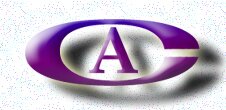Changeling Aspects
For Parents of Gender-Variant Young
For Parents of Gender-Variant Young
Links from Synopsis of Transsexualism
International Links from TranssexualRoadMap
GenderBridge -NZ A Great Site with a Vast Amount of Info.. See their "Resource" section.
Psychiatrists, Psychologists, Counsellors
Hair Removal & Facial Rejuvenation Etc
Queensland Police Service LGBTI Liaison
Australia's Internet Safety Advisory Body
What News Cycles Teach About Timing
If you're aiming to cut through today's nonstop media noise, you can't overlook the real power of timing. The news cycle moves fast, and if you mistime your announcement, it risks going ignored. Think about how often major stories break and instantly overshadow routine updates. To give your message its best shot, it helps to understand when audiences and reporters are most open to what you have to say—there’s more to timing than you might expect.
Defining the Modern News Cycle
The modern news cycle operates at a considerable speed, influenced by various media formats including television, radio, print, and predominantly digital platforms. This cycle is characterized by continuous information dissemination, with news updates being distributed in real-time as events unfold.
Digital media platforms play a significant role in accelerating this pace, allowing for instant updates and fostering audience interaction through social media.
For journalists, this environment necessitates a balance between prompt reporting and accurate coverage, as stories can emerge and dissipate within hours. The nature of the news cycle is diverse; breaking news events tend to be brief but intense, while ongoing stories require sustained attention and adaptability from news organizations.
How Different Media Outlets Shape Timing Strategies
Each media outlet operates with its unique schedule and priorities, necessitating the adaptation of timing strategies to enhance coverage effectiveness.
For newspapers, aligning outreach efforts with their print deadlines and digital update schedules is crucial, typically focusing on early mornings when they finalize their content.
In the case of television stations, mid-morning or midday pitches tend to align well with their show preparation timelines, as this is often when producers are assembling segments for upcoming broadcasts.
Radio stations generally require timely information during the morning drive, which is when listener engagement is at its highest.
When it comes to online platforms such as blogs, the need for flexible, topic-specific timing strategies is evident due to the varied intervals at which bloggers post new content.
It's also important to consider the sector in which the news pertains: for example, technology-related news is most effectively disseminated on midweek mornings, while financial announcements are best timed to precede market openings.
Understanding and respecting these timing patterns is essential, as they significantly influence the success of outreach efforts in gaining media coverage.
The Science Behind Optimal Press Release Timing
When timing a press release, careful consideration can significantly enhance its visibility to journalists and the likelihood of securing media coverage. Research indicates that optimal release windows can increase journalist engagement by 3.2 times.
Specifically, Tuesdays have been identified as the most effective day for distribution, showing a correlation with 27% higher pickup rates compared to other days of the week. In contrast, Fridays should generally be avoided for press releases unless the content is specifically geared toward the entertainment sector.
Engagement metrics suggest that the best time to release information is between 8:00 and 11:00 AM ET, with data indicating that the peak time of 10:00 AM has open rates that are 62% higher than at other times.
Additionally, it's important to be aware of the impact of major events and holidays, which can overshadow your announcement; therefore, planning around these occurrences is advisable.
Utilizing A/B testing and analyzing historical data can aid in the continuous refinement of your timing strategy, thus enhancing the effectiveness of future press releases.
Industry-Specific Timing Patterns
Industry-specific timing patterns significantly influence the effectiveness of press releases, as different sectors adhere to unique media rhythms. Timing your announcements according to these patterns can enhance their impact.
For technology-related news, optimal release times are typically between Tuesday and Thursday mornings, particularly from 8 to 10 AM Eastern Time.
Financial announcements are best released early in the week, with a preference for Tuesday to Thursday, ideally between 6:30 and 8 AM Eastern Time, to coincide with market openings.
In the medical sector, announcements are most effective at the beginning of the week, on either Monday or Tuesday.
For consumer products and lifestyle news, engagement peaks from Tuesday to Thursday, particularly between 10 AM and 2 PM Eastern Time.
Adhering to these timing patterns can lead to more effective communication and increased visibility within each respective industry.
Best Days and Times for Media Distribution
Timing your media distribution is an important factor that can influence the success of your press release. Research indicates observable trends in journalist engagement throughout the week. For optimal results, consider distributing your media on Tuesday mornings, as studies suggest that this time yields approximately 27% higher pickup rates compared to other days.
Wednesday and Thursday mornings also show favorable engagement levels. The time frame of 8:00–11:00 AM ET is identified as a critical window for distribution, with 10:00 AM specifically associated with notably improved open rates. In contrast, Fridays are generally less effective, as many media outlets tend to disengage from regular news cycles, unless the content is related to entertainment.
For more targeted outreach, it may be beneficial to distribute financial news during early Tuesday to Thursday, while technology-related stories are better received when released in mid-morning. Additionally, avoiding distribution during congested news periods enhances the likelihood of capturing media attention.
Seasonal and Event-Driven Timing Pitfalls
When distributing press releases, timing is a critical factor that significantly influences media engagement and visibility.
Research indicates that certain periods, such as major holidays, particularly around Christmas, present challenges due to increased competition and lower engagement levels. Journalists frequently reduce their output during mid-August, which may result in news stories being overlooked.
Optimal periods for distribution include early January or mid-September when newsrooms are more active and audiences are more receptive.
Additionally, it's important to avoid launching news during overlapping industry announcements or conferences, as this can lead to a substantial decrease in visibility—potentially as much as 85%.
Therefore, a strategic approach to timing, considering both seasonal trends and significant events, is essential for maximizing the reach and impact of news stories.
The Impact of Breaking News on Distribution Success
Distributing press releases effectively is significantly influenced by the occurrence of breaking news events. Research indicates that issuing a press release in conjunction with major news can lead to a substantial decrease in visibility. Specifically, it has been observed that the chances of gaining media attention can diminish by approximately 85% when competing with high-profile events.
Journalists tend to prioritize breaking news, potentially disregarding other announcements, especially under tight deadlines.
Further data analysis reveals that engagement rates for press releases can drop by as much as 72% during periods of significant news coverage. Therefore, to enhance the likelihood of media coverage and audience engagement, it's advisable to avoid scheduling press releases simultaneously with major news stories or during weekends.
Leveraging AI and Data Tools for Perfect Timing
When aiming for effective press release distribution, utilizing AI and data tools can be beneficial.
Tools such as SerpAPI and News API utilize AI analysis to examine the media landscape for optimal timing opportunities that may enhance visibility.
Algorithms designed for timing, based on historical performance metrics, have shown the potential to improve media pick-up rates significantly.
Creating timing profiles derived from previous successful releases allows for strategic adjustments in release timings in response to current news developments.
Predictive AI analysis can offer a high degree of accuracy, increasing the likelihood that journalists will engage with and cover your story.
Testing, Measuring, and Refining Timing Tactics
To enhance the effectiveness of release timing strategies, it's essential to rely on data-driven techniques that incorporate thorough testing and continuous optimization.
Begin by establishing a baseline through the analysis of 3-5 press releases released at standard times. Following this, conduct A/B tests to quantify the impact of different timing strategies. It's important to monitor key performance indicators, such as journalist open rates and social media shares, as these metrics can help identify trends that warrant action.
Utilizing timing algorithms that analyze historical data can assist in refining release windows, which may increase media coverage. Research suggests that optimizing release timing can lead to media pickup increases of up to 41%.
Additionally, employing AI tools allows for real-time modifications to release schedules, helping to minimize competition during peak times and targeting audiences when their engagement is likely to be highest.
The key to success lies in measuring the results of these adjustments, refining the approach accordingly, and repeating the process to achieve improved outcomes.
Avoiding Common Mistakes in News Cycle Engagement
Timing press releases requires careful consideration of various factors to maximize engagement. One significant factor is the timing of the release day; research indicates that sending press releases on Friday afternoons can lead to reduced engagement, potentially by as much as 72%, as many journalists slow down their news reporting over the weekend.
Additionally, it's crucial to consider the 24-hour news cycle, where breaking news can overshadow announcements, leading to a visibility decrease that may reach 85%.
Aligning your pitches with journalists' local time zones is also advisable to enhance the likelihood of engagement.
Following industry norms can further aid visibility; for example, technology-related announcements are commonly made on Tuesday or Thursday mornings.
Regular analysis of engagement metrics is essential; relying on previous timing strategies can be ineffective.
Implementing A/B testing allows for the refinement of timing and content strategies, ensuring they remain effective in a constantly evolving media landscape.
Conclusion
If you want your news to stand out, you can't ignore timing. By understanding modern news cycles, tailoring your approach to different media, and using data-driven insights, you'll boost your press release’s chances of being seen. Don’t just send news out—strategically schedule it, adapt based on testing, and avoid common timing pitfalls. Ultimately, success depends on your ability to stay nimble and attentive to both audience habits and the relentless pace of today’s headlines.








